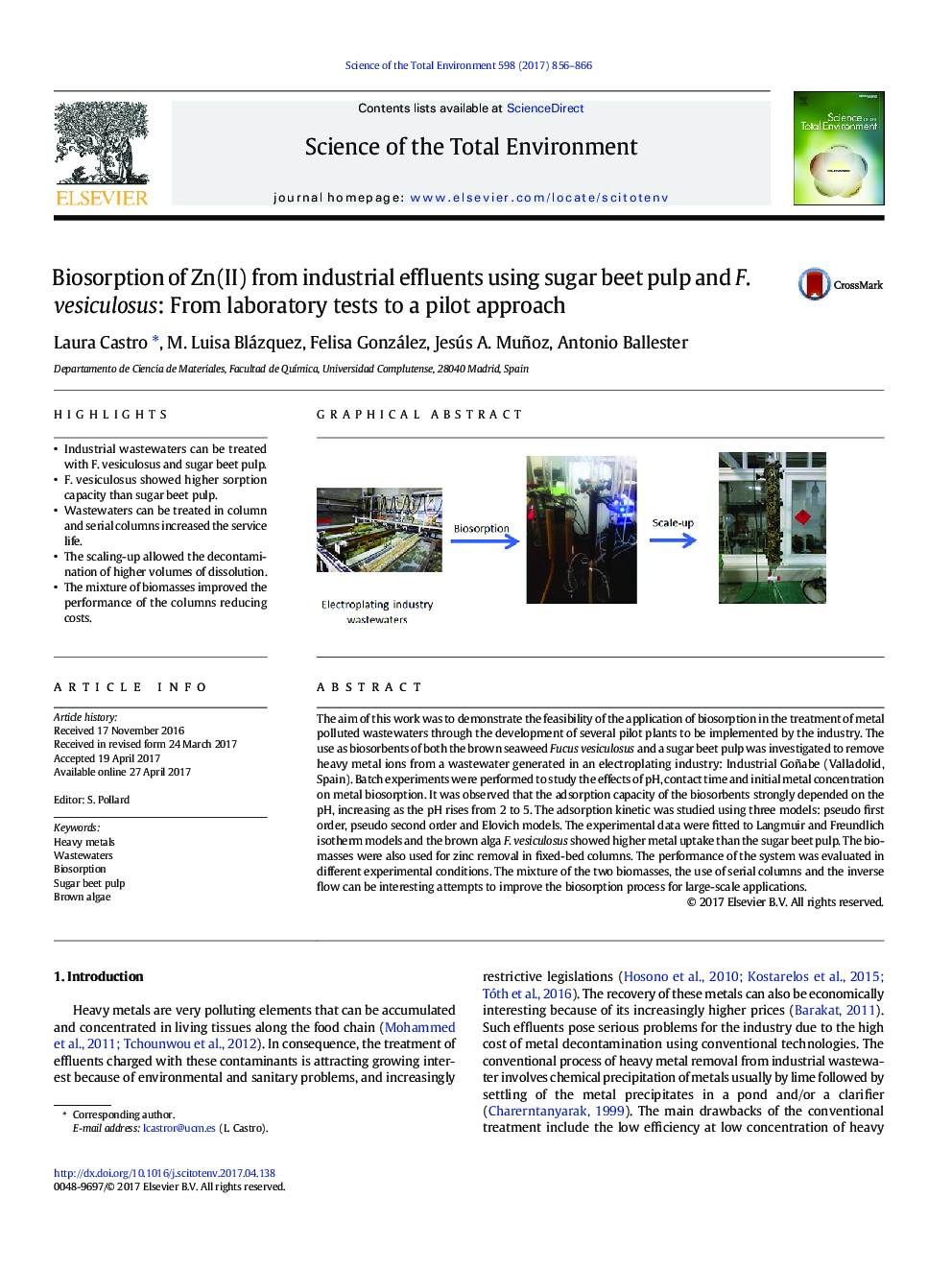| کد مقاله | کد نشریه | سال انتشار | مقاله انگلیسی | نسخه تمام متن |
|---|---|---|---|---|
| 5750999 | 1619699 | 2017 | 11 صفحه PDF | دانلود رایگان |

- Industrial wastewaters can be treated with F. vesiculosus and sugar beet pulp.
- F. vesiculosus showed higher sorption capacity than sugar beet pulp.
- Wastewaters can be treated in column and serial columns increased the service life.
- The scaling-up allowed the decontamination of higher volumes of dissolution.
- The mixture of biomasses improved the performance of the columns reducing costs.
The aim of this work was to demonstrate the feasibility of the application of biosorption in the treatment of metal polluted wastewaters through the development of several pilot plants to be implemented by the industry. The use as biosorbents of both the brown seaweed Fucus vesiculosus and a sugar beet pulp was investigated to remove heavy metal ions from a wastewater generated in an electroplating industry: Industrial Goñabe (Valladolid, Spain). Batch experiments were performed to study the effects of pH, contact time and initial metal concentration on metal biosorption. It was observed that the adsorption capacity of the biosorbents strongly depended on the pH, increasing as the pH rises from 2 to 5. The adsorption kinetic was studied using three models: pseudo first order, pseudo second order and Elovich models. The experimental data were fitted to Langmuir and Freundlich isotherm models and the brown alga F. vesiculosus showed higher metal uptake than the sugar beet pulp. The biomasses were also used for zinc removal in fixed-bed columns. The performance of the system was evaluated in different experimental conditions. The mixture of the two biomasses, the use of serial columns and the inverse flow can be interesting attempts to improve the biosorption process for large-scale applications.
121
Journal: Science of The Total Environment - Volume 598, 15 November 2017, Pages 856-866